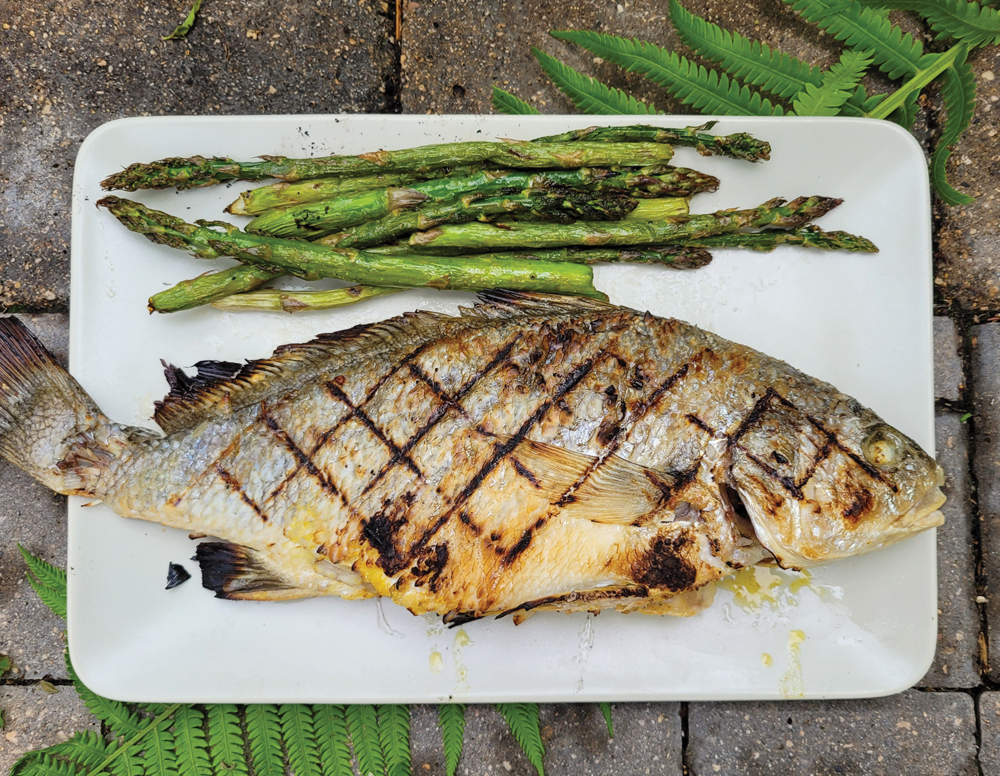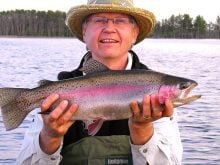Most local anglers would look at my fishing calendar and wonder why I’m taking a pass on walleye so often.
At the risk of getting angry emails for saying so, I find them a little boring.
Sure, they taste great, but so do other species. Walleye don’t put up much of a fight and the usual ways to fish for them – baits jigged or sitting on the bottom or trolling lures and spinners – often leaves me wanting.
Read Also

Manitoba launches CWD tracking tool
A newly launched digital dashboard allows hunters to track where chronic wasting disease has been confirmed in Manitoba
Why it matters: Most anglers fit into the I’ll-give-it-a-try category, but typically go back to their walleye-focused ways by their next fishing trip.
The other day, I did a tally and came up with 34 fish species that I have caught in Manitoba. I make a point of going after about a dozen of those at some time during the year.
That list includes three underrated fish that don’t get much attention, but are especially deserving of anglers’ respect: channel catfish, freshwater drum and common carp. My biology brain is attracted to their unique adaptations. My angler brain enjoys the challenges of getting them on the line and my stomach enjoys the new flavours they bring to the dinner plate.
Ground zero for big channel catfish
There is a small but dedicated cohort of local anglers and fishing guides who target channel catfish, especially in the Red River.
Found in the Red and Assiniboine river watersheds and Lake Winnipeg, this species is unloved because of general attitudes. Most people recoil at the sight of one in the net. The common reaction is along the lines of, “Gawd, they’re ugly!”
Then there is the assumption that catfish are low-level scavengers.
On both fronts, I must spring to their defence; catfish are perhaps the most interesting and well-adapted fish swimming our waters.

There are hundreds of catfish species worldwide and most are supremely adapted to living in murky waters. From the long whiskers, or barbells, to a remarkable array of sensory receptors, they have the means to know what’s going on around them, even in muddy waters.
As fish go, their sense of smell is exceptional. High densities of taste buds are in their mouths and on their lips and whiskers, but they also have taste receptors along their bodies, which have no scales to get in the way.
Imagine your skin telling you how tasty a steak is while it’s sizzling on the barbecue.
They are also sensitive to the merest of changes in water pressure, such as those that might be caused by a frog swimming nearby. To round off the sensory arsenal, they have reasonably good eyesight.
With a package like that, it is easy to see why one writer called them a swimming sensory organ.
Add in a wide mouth capable of taking large meals and you end up with a predator that targets live prey and thrives at the top of the food chain. Like pretty much all other fish, they will scavenge, but adults focus on just about any live prey that comes their way, including minnows, small fish, bigger fish, crayfish and frogs.

Anglers are often frustrated by the fussy eating habits of catfish. Baits that work one week are sometimes ignored the next because the fish have shifted their taste preferences. The standard approach is to fish with pieces of cut bait, like goldeye or tullibee, from shore or an anchored boat. Shrimp, worms and frogs can also be excellent baits.
Don’t go after them with a walleye rod, especially on the Red River. These fish demand bigger gear. Big catfish fighting in a current have led to loss of a couple of my cheaper fishing reels.
Manitoba’s populations are about as far north as catfish get, and those in the Red River channel stand out among anglers and fish researchers because they reach such great size and age.
Manitobans’ general refusal to eat them, combined with maximum size limits (after which fish must be released), are the main reasons. The biggest catfish in our region may be over three decades old; they don’t get to that ripe old age in places where they are prized table fare.
Manitobans seem to shy away from eating catfish in a world that generally loves them. I know many catfish anglers who have never brought one to the dinner plate.
I find fried catfish fillets to be firm, white, flakey and delicately flavoured. They are oilier than walleye, but that makes them an excellent choice for the smoker. Some of the best smoked fish I have ever eaten has been catfish.

The beat of the drum
Freshwater drum, also known locally as silver bass, are found in the Red and Assiniboine rivers, Lake Winnipeg, Lake Manitoba and even down the Nelson River. Anglers also encounter them in the Great Lakes, where they are abundant and grow large.
The name ties to the croaking noises made by males of the species, which I often hear when handling fish. Biologists believe it is a means to attract females because it is heard during the spawning season.
In mid-to-late June, the sound can be heard above the water line, and it apparently sounds like distant traffic. I have not encountered this, but it is reported in the authoritative Fishes of Manitoba reference book.

Drum feed on aquatic insects, minnows and crayfish. They are one of the few fish that also feast on small clams, including zebra mussels. As we must now learn to live with zebra mussels, perhaps we should learn to love a species that will probably be on the increase because of them.
Drum have been the mainstay of many of my June fishing trips on the lower Red River, where they take artificial lures and flies with great abandon. In late May this year, I watched a fellow fly-fisher land about 50 in a morning at the Red River Floodway outlet – almost every cast.
Last summer, they were the highlight of a trip on Lake Manitoba. I had invited my friend and his son for what I thought would be a sure-fire perch fishing outing. The perch had other ideas, but the drum were everywhere, and my young guest landed at least a dozen hard-fighting drum. All it took was a jig and a minnow dangling off the bottom below the boat.
Those fishing from shore can use pickerel rigs and salted minnows to great effect.
There is a dedicated community of anglers that target drum in the lower Whitemud River and Lake Manitoba Narrows. The Manitoba record for the species is 34 inches, which would be over 20 pounds. Catching drum weighing over 10 pounds is not unusual in our waters.

Folks raised on walleye and little else don’t eat drum. The larger ones can develop strong flavours, but the smaller ones dodge that issue.
I hadn’t eaten one for a while so, in the interests of journalistic investigation, I brought home a 14-inch freshwater drum the other day and grilled it on the barbecue with only a sprinkle of salt and lemon pepper. It was firm-fleshed and delicately flavoured, reminding me of saltwater snapper.
I have also used it, cut into small chunks, in saucy recipes like fish curry. Smoked drum is also very good.
When you prepare drum, it helps to remove the “mud line” a thin band of red-coloured flesh that lies just inside the skin.
Learning to love the invader
What were people thinking when they released carp into North American waterways?
Ecologists continue to ask that question with great frustration because carp have degraded wetlands and shallow lake habitats on a vast scale.
As our continent’s native species were being fished out in the 1800s, newcomer immigrants harkened back to carp, revered in Europe and Asia for perseverance, ability to adapt and food qualities. Public pressure led to carp cultivation and stocking programs. Introductions in several major watersheds took hold and the carp did the rest pretty much on their own.

Unfortunately, instead of becoming a reliable source of food, wild carp almost always develop a strong, muddy flavour that turns off most people. I can’t think of any fellow anglers who eat carp, and some of them are adventurous in the kitchen. That said, I was once served smoked carp, and it was delicious.
I don’t catch carp for the table, but I have started to fish for them. Their reputation for being a challenging quarry is well deserved.
I love fishing in shallow waters – the best times are May and June – where I can cast to them as they cruise around. I soon learned that the slightest movement would send them off like a torpedo. They are also very good at picking up and spitting out my offering before I even realize what happened.
If you get one on the line, expect an incredible fight, especially when you consider that 20-pound plus fish are pretty common.
One of my best days for carp occurred at a pond in a wide ditch along Winnipeg’s south Perimeter Highway. The pond had back flooded from the Red River during a summer high-water event. While I was merrily catching large, hard-fighting carp in the flooded grasses on my fly rod, cars and trucks were honking at me, reminding me of just how silly I looked. Everyone had fun.
An effective technique for bait-fishers is to select a spot known to hold carp and “seed” it with some carp attractant – canned corn or dry dog food.
Go with gusto
When it is all said and done, the way we fish and what we fish for flows from our preferences, our experiences and, ultimately, the biases we develop. If you are in a rut, species-wise, maybe it’s time to see what else our waters have to offer. You may be pleasantly surprised.
– Tim Sopuck is the former head of the Manitoba Habitat Heritage Corporation.
















